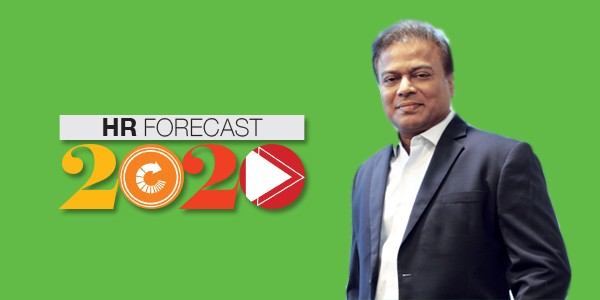Technology, data, employee experience: What’s high on agenda
In the ongoing digital era, the focus has shifted to productivity through intelligent automation. Embracing the disruptions as means of improvement has been the success mantra for many organisations.
In order to improve employee experience, organisations are relying on advanced strategies built through Artificial Intelligence (AI) and data analytics with employee data at the centre. Mining of such data is simplified with techniques, such as Natural Language Processing (NLP), machine learning, chatbots, and so on.
Technology has opened up new avenues for engagement and performance management. Many other processes are created, and the existing processes are made much simpler, effective and tailored.
Another major disruption is taking place in TA, where many organisations have shifted from conventional recruiting to talent scouting. Simply put, the focus is not only on filling the vacancies, but also on looking out for potential candidates to develop future teams.
Recruitment is gradually moving towards creating a live talent database through automated CRM solutions, such as Applicant Tracking Systems (ATS), talent warehouses, candidate inventories, and so on.
HR analytics has positioned itself as a means for monitoring all the processes associated with employee. It has created huge opportunities in the analyses of competency, capacity, capability, culture, leadership and performance. The era of lag indicators, such as dashboards contributing towards decision-making is gone. Now the strategies are designed with analytics-based leading indicators.
Tech influence on culture of learning
Learning is moving closer to the business through relevance, ownership and solving business problems. Return on Investment (ROI) of learning is being accessed through significant value addition and prominent business impacts.
More gamifications, real-time simulations, on-the-job trainings and virtual trainings have reinforced the importance of personal experience in the 70-20-10 model of learning and have led to the almost total destruction of classroom trainings.
Employees are the new consumers
Due to the new-age technologies, work-life boundaries are gradually diminishing. The balance is gradually tilting towards life and work is becoming just a part of life instead of being a driving parameter.
Employers are revamping their employment into a unique experience and turning their employees into brand advocates. There has been a shift from employment to consumerisation, where the employees are treated as customers and strategies are developed to attract and retain them.
Time to say goodbye to a few age-old HR practices
As jobs continue to become more autonomous and decisions get made from the bottom-up, companies are realising that one-on-one meetings between supervisor and employee help move along projects faster. In such a scenario, management shouldn’t be a bottleneck but an enabler. Hence, instead of an annual performance management, organisations will focus on continuous year-long performance management in the future. Measuring outcomes and contribution will substitute measuring efforts/performances.
Moreover, millennials will constitute almost half of the working population. Therefore, more focus will be on putting in place means of instant and informal communication, so that information can be transmitted at the earliest and decisions can be made on the go.
Robotic process automation – HR to play a more decisive role
With Industry 4.0 knocking on our doors, there is a shift happening in human resource departments worldwide. A transient workforce, lack of clearly-defined structure, and a bottom-up approach to project management will push leadership to leverage the expertise of their HR department as partners in business. Their help will be sought in making projections, opening up new revenue streams, or deciding to shrink or expand operations.
This shift is a disruption in itself — forcing the HR technology community to move even faster and more efficiently than ever before. HR will have to be at its agile best in the years to come. The HR of the future can be best described as large transformation agents using capabilities, culture and contribution. Digital will be the common denominator to ensure
the same.
(This article first appeared in HRKatha print magazine)



